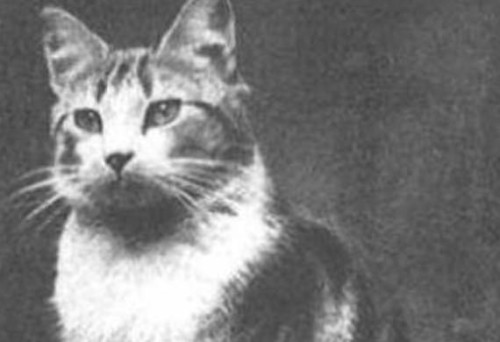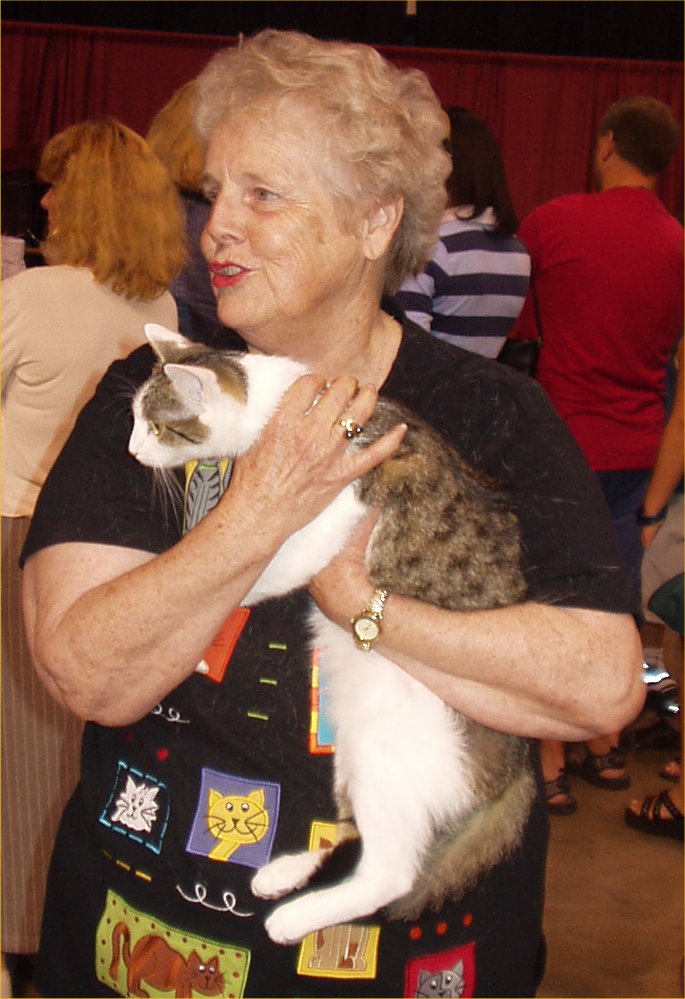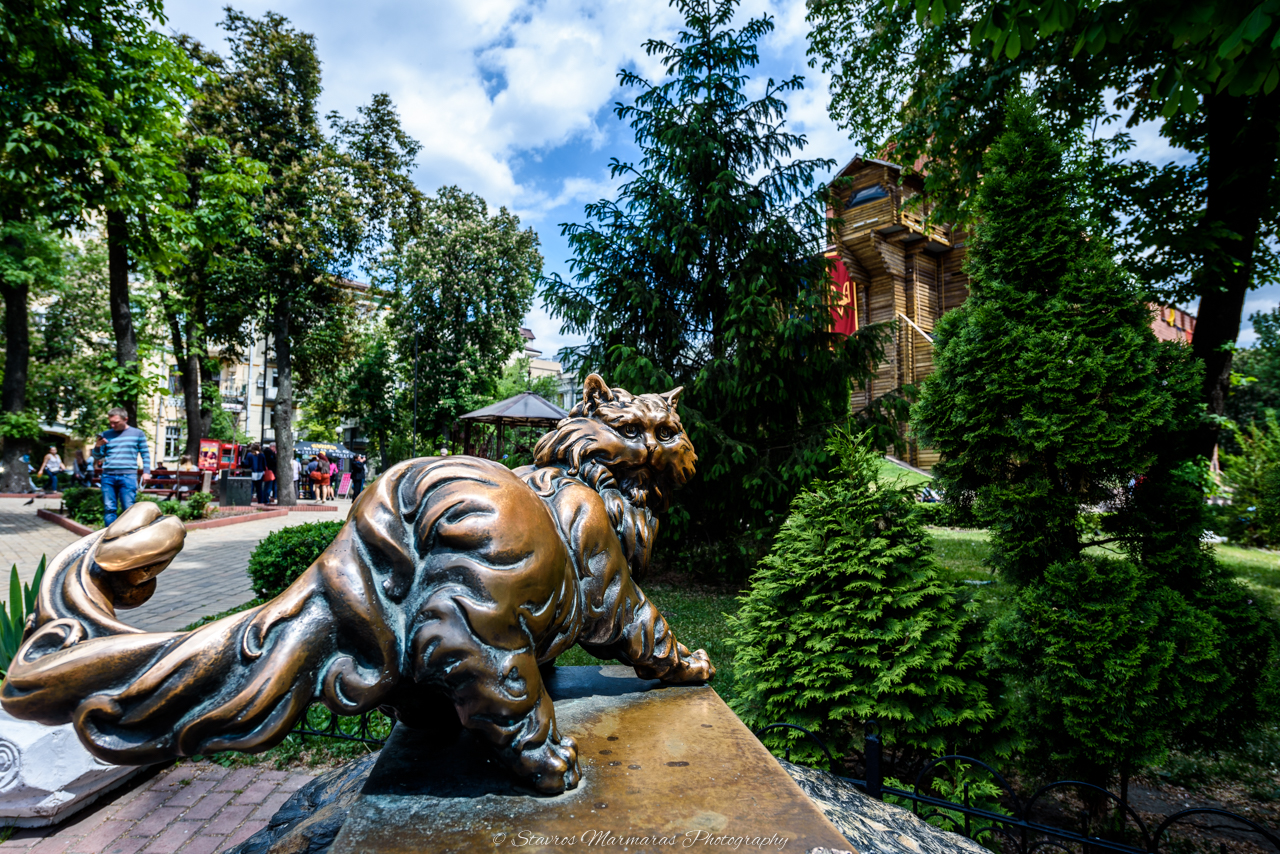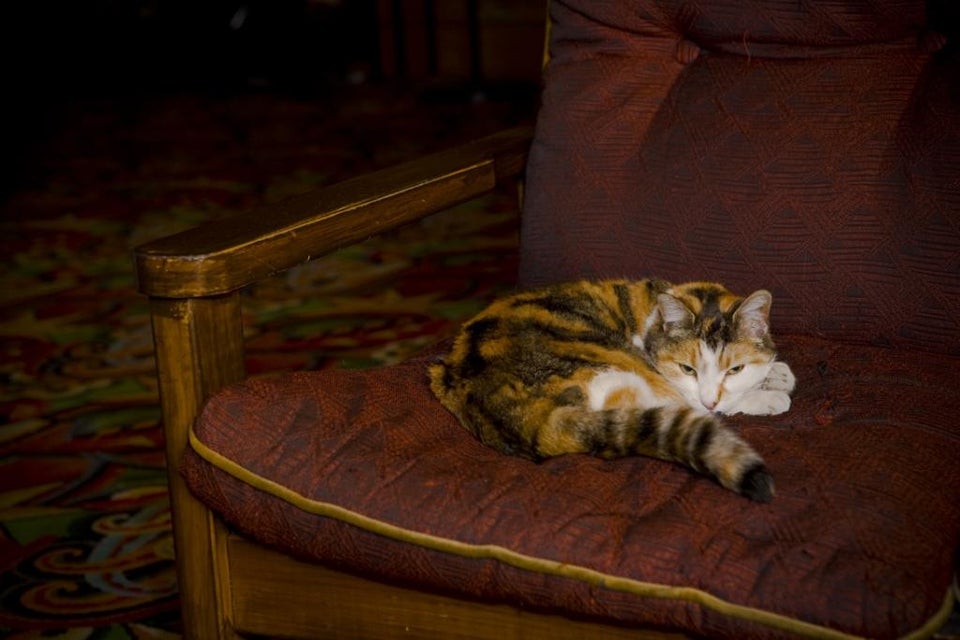Perri Cutten: A Timeless Legacy in Fashion
Remembering Perri Cutten: A trailblazing Australian fashion designer whose timeless elegance and...

 Search...
Search...
Whether you are a cat enthusiast or not, it should come as no surprise that there are some famous felines who have clawed their way into the history books.

A church cat named Faith took residence in St Faith & St Augustine's church in 1936 after notices posted to find her owner's whereabouts failed. She remained at the church and regularly attended Sunday mass, sitting at the feet of Father Ross while he preached in the pulpit. Faith eventually gave birth to a black and white kitten named Panda whom she never wanted to leave the basement area, despite several efforts by Father Ross to bring her up. Miraculously, Faith's insistence on Panda's basement refuge saved both their lives, for on September 9th an air raid destroyed the entire upstairs of the church but they both survived having been protected in the basement. Faith received a PDSA Silver Medal for her bravery in caring for her kitten and a picture of the pair still hangs in the church today.

A ship's cat named Trim accompanied Matthew Flinders aboard the HMS Reliance on its voyage to circumnavigate the Australian coastline in 1801-1803. Trim's life was nearly cut short when the kitten fell overboard but managed to swim back to the ship and climbed on board. Flinders and his crew were amazed at the cat's strength and intelligence and he quickly became a favoured crew member. Trim continued to sail with Flinders until his return voyage to England where he was stopped by the French in Mauritius and imprisoned for spying. Trim remained by his side whilst in captivity until his disappearance. A bronze statue of Trim was erected in front of the Mitchell Library in Sydney in 1996, directly behind a statue of his owner; which was erected in 1925 after his grandson donated Flinders' personal papers to the library.

Félicette boldly went where no feline had been before, launching into space on October 18, 1963 as part of the French space program. Gathering 14 female cats, the then unnamed cats were trained for spaceflight. Scientists at the time wanted to understand how the lack of gravity could affect animals, essentially if they could survive space, so could humans. C 341 as Félicette was first named, was ultimately chosen for the mission based on her calming demeanor and appropriate weight. On launch day, Félicette was placed into a capsule and launched into a rocket that could travel 5 to 6 times the speed of sound. The engine burned for 42 seconds on ascent and she experienced 9.5 g of accelerations. The rocket reached a height of 152km and the brave cat was subjected to five minutes of weightlessness. Thirteen minutes after takeoff Félicette was safely recovered having successfully completed the mission. While most animals which traveled in space have been celebrated as heroes, poor Félicette had not. Then, in 2017 a crowdfunding campaign started to erect a bronze statue of Félicette, commemorating her contribution to science. By April 2018 the project met its £40,000 funding target and the statue was finally unveiled on December 18, 2019 as part of the 25th anniversary celebration of International Space University's Space Studies program.
Simon, the ship's cat of HMS Amethyst, is the only cat who can boast a PDSA's Dicken Medal. Awarded for his rat-catching and morale-boosting during the Yangtze incident; a historic event which involved the Royal Navy Ships and HMS Black Swan on the Yangtze River during the 1949 Chinese Civil War. The crew aboard the HMS Amethyst viewed Simon as their lucky mascot. He gained a cheeky reputation with presents of dead rats being found on the sailors' beds and he slept in the captain's quarters. During the Yangtze incident when the Chinese PLA opened fire, the captain's cabin was hit hard, seriously wounding Simon and killing Lieutenant Commander Skinner. The badly wounded cat was treated by the ship's surviving medical staff but was not expected to last the night. However this cat's nine lives weren't up yet and he survived, returning to his former duties. Simon aka the honorary 'Able Seacat' contracted a viral infection from his war wounds and subsequently died on 28 November 1949. Hundreds of people, including the entire surviving crew of HMS Amethyst attended his funeral at the PDSA Lilford Animal Cemetery in East London.

The world's first cloned pet CC, was cloned thanks to groundbreaking work done by scientists at Texas A&M University in conjunction with Genetic Savings & Clone Inc. Born December 22, 2001, CC was adopted by Dr Duane Kraemer, a senior professor who helped bring her to life. The news spread quickly of the cloning and people became interested in saving their own pets' tissues so they too could potentially be cloned in the future. CC went on to give birth to four kittens, of which 3 survived and throughout her life, CC appeared to be free of any cloning-related health issues, and so too were her offspring. On March 3, 2020 CC died at 18 in College Station, Texas where she was also born.

The bronze monument to Panteleimon stands at the exit of Zoloti Vorota subway station in Ukraine. The tale goes that the Persian cat Panteleimon lived at the restaurant opposite the Golden Gate; he was a pet to the restaurant's owner. He quickly became a friend to staff and visitors because he never let himself rest until he was completely satisfied that all guests were comfortable and well. One day a fire swept through the restaurant and sadly the beloved cat died. In memory, friends of the restaurant and customers helped fund a bronze statue to commemorate the animal and installed it in front of the restaurant. Today, large crowds gather, wanting to take a picture or to make a wish rubbing the cat behind the ear.

Who would have thought an American internet celebrity cat would make the list? Tardar Sauce, nicknamed Grumpy Cat, became internationally famous for her permanently grumpy facial appearance, which was caused by an underbite and feline dwarfism. September 22, 2012, Byan Bundesen posted a photograph on Reddit and users created 'lolcats' and 'parodies'. Grumpy Cat went on to make many media appearances and also featured in multiple advertising campaigns. As of March 10, 2021, Grumpy Cat had 8.3 million Facebook likes, 2.5 million followers on Instagram and 279,000 subscribers on YouTube.

The Astor Theatre in Melbourne, Australia had a calico cat who was a fixture at the cinema since arriving as a stray kitten. Marzipan as she was affectionately named, was the theatre's unofficial mascot and was often seen sitting on the couches, waiting for the patrons to pat her as they left the cinema. Astor Theatre patrons would often take photos with her and she even had her on Facebook page, which now has been updated with tributes of their theatre loving, feline friend.

In 1996, Scarlett attracted worldwide media attention after her heroic efforts to save her five kittens from a fire in Brooklyn NY. The NYC Fire Department responded to a call and quickly arrived to extinguish it. Once the flames were under control, firefighter David Giannelli noticed the cat carrying her kittens away from the garage one by one. Having suffered horrible burns, her eyes were blistered shut and the only way she could ensure all her kittens were safe was touching each of them with her nose - she was then seen to collapse unconscious. Firefighter Giannelli named her Scarlett, and after months of treatment and recovery, Scarlett and her kittens were all well enough to be adopted out by the North Shore Animal League who had nursed them to health. Scarlett reminded the world the power of a mother's love.
By Kirsten Jakubenko
Sources: